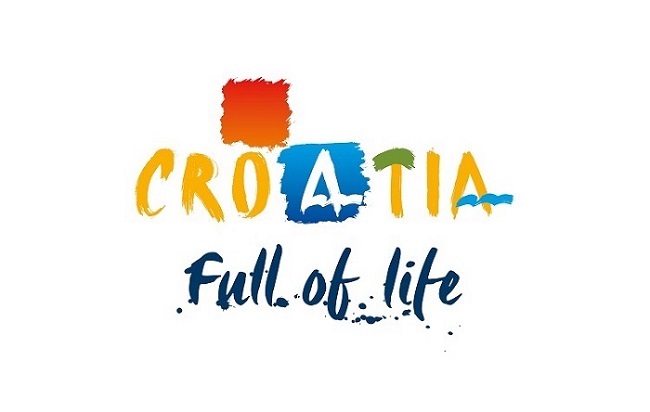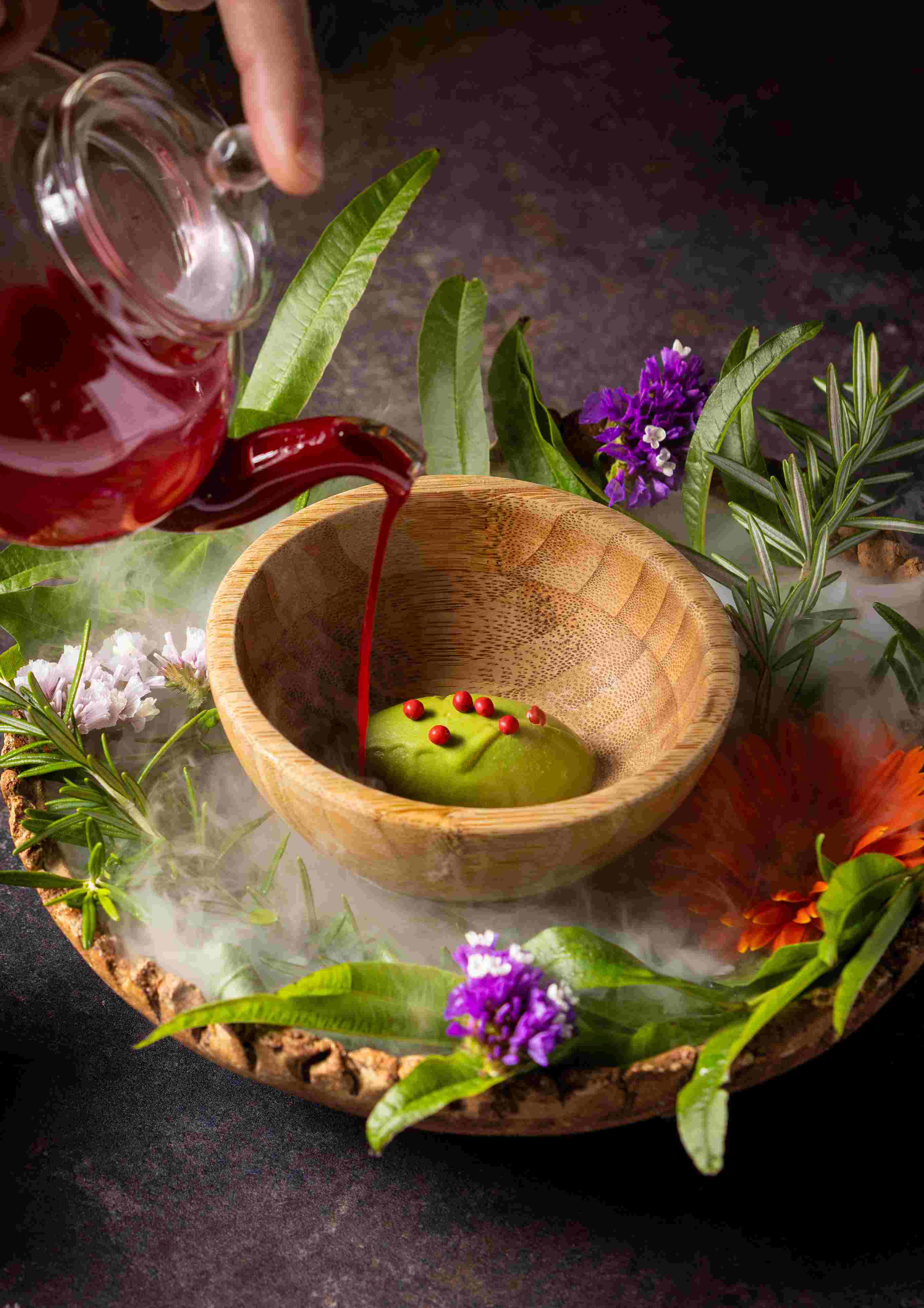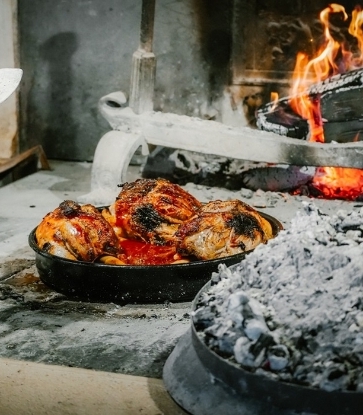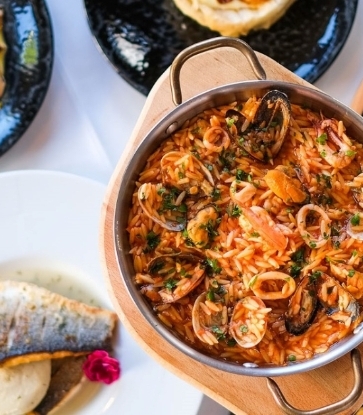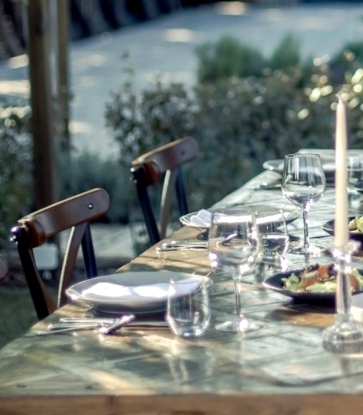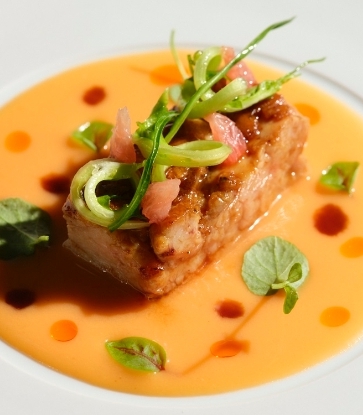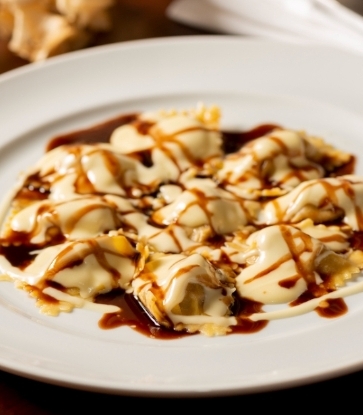This area is home to Croatia’s main islands, such as Cres and Krk, and this is also where some of the best scampi in the Adriatic are caught – large, full of flavour and often described as the best scampi in the world. However, the area also includes Croatia’s two mountain regions (Gorski Kotar and Lika), which means that in addition to fresh fish and seafood the region also boasts local delicacies such as mushrooms, fruit, game, cheese made from cow’s, goat’s and sheep’s milk, as well as honey, frogs, snails and lamb – the latter considered by many to be the highlight of traditional Croatian gastronomy. Given the abundance of local ingredients, it’s no surprise that this is the area that saw the birth of modern Croatian gastronomy in the mid mid-20th century.

The cuisine on the coast focuses on fish, seafood and vegetables, although you’ll also find excellent olive oil here, as well as herb-flavoured grappa liqueurs and wines such as the local white Vrbnička žlahtina from Krk, which is harmonious and boasts a strongly defined aroma and flavour.
Meanwhile, Cres is renowned for its lamb which comes from the wild sheep which populate the island, and the islands of Rab and Lošinj for their fish soup, octopus salad, squid and mussels, all of which are prepared in the traditional way and served with locally grown vegetables.
In Kvarner’s inland area, the wooded region of Gorski Kotar is famous for its berries, mushrooms and freshwater fish, while lovers of venison will enjoy sampling the local smoked venison prosciutto and venison stew, the latter served with home-made gnocchi or bread dumplings.
However, let’s return to scampi, the main product of Kvarner, whose capital, Rijeka, is a key center for this delicacy.

Together with the Gulf of Trieste, Kvarner, which is home to the coastal Opatija Riviera, is the part of the Mediterranean that is most deeply embedded in the European continent. The streams that plunge into the Karst landscape below the Učka mountains flow towards Kvarner, carrying leaves and organic material which then form sediment in the sea (the so-called blue mud) that makes an excellent habitat for scampi. Decapod shellfish similar to lobster, scampi love cold waters and grow slowly because they mutate – they don’t reach a weight of 200 grams until they are ten years old.
Light red in colour, thanks to the fact that they live in fairly shallow seas, Kvarner scampi have a thin shell, an elastic, tasty flesh and are tender and delicate, with a soft, sweet flavour.
According to one study, scampi originally arrived in the region from Norway, clinging to the keels of ships that made their way to this part of the Adriatic. Having acclimatised to the habitat, they owe their characteristics to the shallow waters here which guarantee their delicate flavour. The best time of year to fish for scampi is in May and June or September and October: in Mali Lošinj bay, fishing starts at depths of 50-70 metres, while later in the season, this can go down to 100m. The best scampi are harvested with traps fixed on a longline, not with nets on the seabed – the catch should never include dents, mud or sand for the scampi to be considered of the highest quality.
They are taken from the sea alive, with undamaged shells, and are then delivered by fishermen to restaurants all along the coast. Thanks to their firm, delicate flesh, they can be cooked in different ways – the largest scampi are eaten freshly grilled, medium-sized ones are ideal in a busara-style tomato sauce, while smaller scampi are used in sauces, pasta and risotto dishes, or served raw in cold appetisers.
One of the places to buy the best scampi is Rijeka market, known to locals as “Velika placa” (the large market). It was built along the coast, not far from the wooden jetty where local fishermen unloaded their catch and took it to be sold in baskets – the market was subsequently covered during the 19th century.
Even today, a reminder of the market’s seaside location is the way the stalls and neighbouring streets can flood at high tide when the Scirocco wind is blowing. Towards the end of the last century, the outdoor market (where fish, crabs and shellfish were originally sold) was replaced by an indoor market, making it more convenient for local inhabitants. The project to build two pavilions was entrusted to the engineer Isidor Vauchnig, director of the town’s building department, and in July 1881 the market moved to these two identical, inter-linked buildings.
Situated on the square, the pavilions, together with the fish market, became an important feature in the town and the hub of a new residential area. In the early 20th centur, the fish market changed once again and in 1916 a completely new building took shape in the same location, designed by architect Carlo Pergoli from Fiume, whose works were influenced by the Viennese secession with influences from the Romanesque style.

How to serve scampi
The easiest way to prepare scampi is to marinate them in lemon and olive oil, while another delicious appetiser option is to serve them shelled with a pink cocktail sauce and vegetables. Meanwhile, traditional šurlice pasta from Krk island is often served with scampi sautéed in a tomato sauce. Finally, scampi are also served with a typical Adriatic busara-style sauce, having been baked in the oven and drizzled with Krk white wine. They are also excellent fried or boiled and served with different sauces.
